By Jeffrey A. Rendall, Images Courtesy of Mizuno Golf
NORCROSS, GA – You certainly wouldn’t know it just by looking at a golf club, but a lot of technology is already “built-in” to the head.
It’s true, every golf club, to some extent, looks just like every other finely shaped chunk of metal. Some are larger, some contain inserts, some are even different shades of color based on the type of materials used – but all share a common characteristic of basic shape, loft and grooves.
So it’s the ‘stuff’ inside the head that makes the difference, and that’s never been truer than for Mizuno’s latest game improvement irons and driver, the JPX-800s. For those in-the-know, Mizuno has acquired a reputation for forging some of the sweetest looking golf clubs on the planet, products as easy on the eye as they are on the scorecard – but even then, they still ‘look’ like golf clubs.
According to Mizuno’s Golf Club Research & Development Manager, David Llewellyn, there’s much more to it than what you see with the JPX-800 irons (the driver will be discussed below): “Our company is most famous for our MP irons, with muscle back, shallow cavities, and recently we’ve introduced a little bit of technology into the MP side with the milled pocket cavities and some different things.”
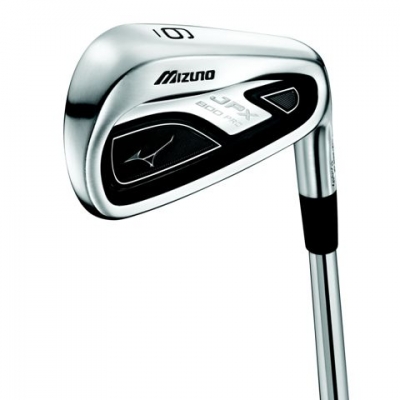 |
He continues, “But we also have done game improvement golf clubs under the MX line and had a lot of success with them. Those products were designed primarily for the U.S. and European markets. For Japan, it was a completely different set of products (for local preferences) under the JPX name. In 2008-09, we decided to go to a global game improvement brand – we’d had MX for awhile, had good success with it, but it was time to try something brand new for the U.S. and European markets.”
“We decided to share technologies and introduce a global model which would be available all around the world – and the head shape and all those different things would be more attune to the Western world, which is the U.S. and Europe,” Llewellyn remembered.
Standardization can only help the product’s recognition – sounds like smart thinking.
There’s also a bit of a stigma surrounding the term game improvement, but Llewellyn says there doesn’t need to be. For Mizuno, a game improvement golf club essentially means any design outside of MP that helps elevate a player’s game based on design (the MP line is called game enhancement – which means you already have a good game and you want the best tools to enhance your game).
Game improvement clubs provide a larger MOI (moment-of-inertia), a hotter face, and a lower and deeper center-of-gravity (COG) to help launch the ball. It’s a fancy way of saying the club will help you hit it higher and longer.
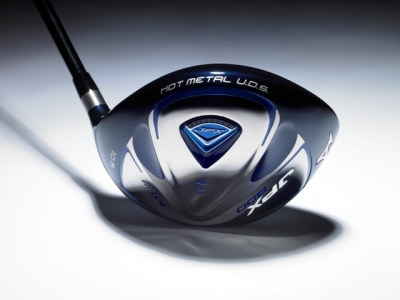 |
For the JPX 800, there are actually two different constructions as well – the JPX-800 model uses a casting process for the head, and the JPX-800 Pro is grain flow forged (like all the MP models).
With the sizeable cavity on the JPX-800 Pro and the distinctive shape, it’s a wonder that such work can still be accomplished through the forging process. “We can definitely do some things with geometry or shape-wise to get the MOI and COG that we’re looking for in the forging process,” Llewellyn explained.
“We’ll also do an additional milling step on the JPX-800 Pro where we get a little bit of an undercut in the cavity, and we also mill the face down to the minimum we need for durability. There’s a little bit of a COR boost versus a thicker-faced MP irons,” he added.
I found the JPX-800 irons to be extremely easy to play, but just because they’ve got the label ‘game improvement’ doesn’t mean that good players avoid them like the plague. Llewellyn said that Mizuno Tour player Charles Howell III used the 800 Pro model for a good portion of this season (until the MP-59 came out) and LPGA sensation Stacy Lewis has been using them since their launching.
“We feel good that we’re engineering some playability into the design, but we’re also not offending or alienating top players,” Llewellyn said.
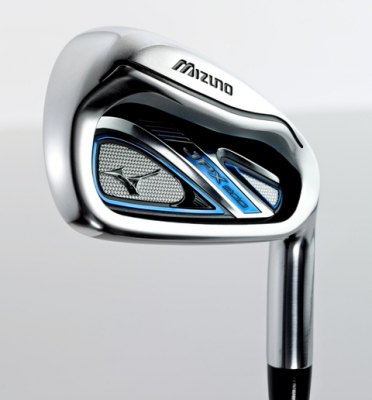 |
One of the ‘friendly’ aspects of playing the JPX-800 Pro irons was the muscular distances they hit the ball. Irons aren’t supposed to be known for distance, but these clubs give that extra boost of confidence because you know you’ll hit it high and long.
Llewellyn came clean on part of the reason for the boost in distance – stronger lofts – at least compared to their MP models. He said it’s a trend in the industry, and Mizuno simply didn’t want to be known as the ‘short-hitting iron.’
It seems that the golf manufacturers are all fudging a bit on the lofts in order to juice-up the distances – I guess, who could blame them. It’s quite an ego boost to hit a 7-iron 170 yards, so no problem here.
But there’s more – some might describe it as the slow phasing out of the 3-iron. The standard JPX-800 set runs 4-iron through gap wedge, a configuration that’s becoming more and more common these days. So why is the 3-iron going the way of the dodo bird?
Again, Llewellyn expounds. “Obviously hybrids have had an effect on the make-up of golf sets, though they’ve leveled off recently. But loft-wise, a 3-iron is going to be 20 or 21 degrees, and a lot of people feel more comfortable with a hybrid filling that gap in their bag. It’s a trend. I’d say 10 years ago a 3-iron was 22 degrees, and now they’re 20 degrees – so we’re kind of doing it to ourselves just a little bit, reducing the playability just through strengthening of loft.”
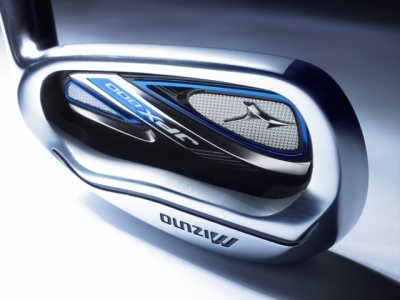 |
Which brings us to the ‘gap’ wedge. According to Llewellyn, it’s a 50-degree wedge, designed to come between your 45-degree pitching wedge and your sand wedges. It’s essentially an ’11-iron.’
“You can certainly use it for long shots out of the bunker, which I’ve done plenty of times, but design-wise, it’s really geared to be an 11-iron. It’s the continuation of the iron set – it has the same geometry to it,” Llewellyn lectured.
Talk about shattering your golf paradigm – I’ll never think of a golf set the same again.
It’s also good to note – Mizuno offers a performance fitting system to ensure that your iron shafts are right for you. “It swings like a six-iron, with mounted electronics just below the grip,” Llewellyn said. “It measures your club head speed, tempo, whether it’s toe down, kick angle and release factor. Load it all into a software program and out comes a shaft recommendation.”
If you’re going to put the money into a high quality set of irons, fitting is definitely something you should do.
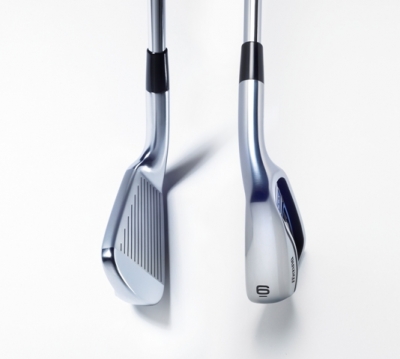 |
While we were trying the JPX-800 irons, we also took a look at the Mizuno JPX-800 driver – which has a very traditional look, nothing fancy and nothing ‘shocking.’
It turns out, that too was ‘built in’ to the Mizuno thought process.
“When we were all sitting around and conceptualizing the JPX-800 driver, one of the things that was really front-of-mind was that you only have one chance to launch it and get it right,” Llewellyn recalled. “We really wanted to put our best foot forward – we didn’t want to alienate or offend any players by making it too game improvement, or too better player oriented in terms of specs or head shape.”
“So we tried to build all the game improvement in, internally,” he added.
It’s good to know all the playability is there, though you won’t notice it. For example, you’ll see a square face angle, a pretty standard lie angle, and no ‘bias’ offered in the club. It’s just something that wants to go straight – never a bad thing when you’re talking about a driver.
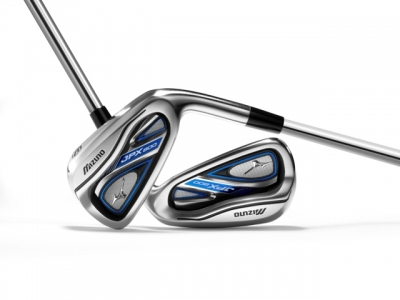 |
According to Llewellyn, they accomplished what they set out to do by ‘hiding’ all of the technology on the inside of the head – with two internal weights. There’s a 10-gram weight that’s positioned on the full side of the very back of the club head, and a 5-gram weight is placed in the heel of the club.
The back weight provides a deeper center-of-gravity and more MOI. The heel weight gives the club its neutral trajectory. “Compared to those in the competitive landscape – the Burners and G15s, now G20s – you would see MOI numbers that are very similar, if not better,” Llewellyn said proudly.
One thing it’s not is adjustable. That too was a conscious decision on Mizuno’s part.
“We looked at adjustability quite a bit,” Llewellyn again explained, having said the company produced a very popular adjustable driver (the MP 600) a few years ago with movable weights. “What we find more and more is that people really don’t use those features. We would rather hit the center of the bell curve, the 80-20, and make something that’s really easy to use and non-biased trajectory, and good-looking, and really nice sound. We just decided not to go down the adjustability road.”
Like with the irons, we enjoyed the performance of the JPX-800 driver, finding it easy to adapt to as well as forgiving for those who tried it. We don’t scientifically test clubs, so we can’t say whether it added (or subtracted) any distance – but the sound wasn’t ‘tinny’ and there’s nothing distracting about it.
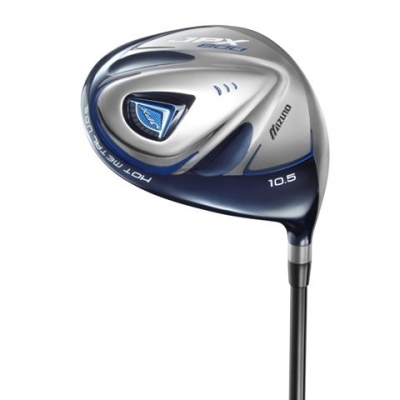 |
As always, we recommend adding it to you trial bag when searching for a new driver at the golf shop. Comparing it with others will certainly give you an idea of its quality and ease of use.
It should be noted that the world’s current #1-ranked player, Luke Donald, has long been a Mizuno brand ambassador. Llewellyn says the company has enjoyed the additional exposure from having Donald at the top, but there’s one other notable thing to come from it: “Something that we’re really proud of is that the equipment he uses is the same kind you can buy yourself. It’s not doctored up for Luke – it’s really the stuff that the consumer can go down to your local golf store and purchase off the shelf.”
It doesn’t get much better than that, because with Mizuno, the quality is already built-in.
Details:
Mizuno JPX-800 Irons and Driver
Inquire at your higher-end golf retailers and club pro shops. Available in right and left hand with a variety of custom shaft combinations.
Check out more information about Mizuno Golf products at: www.mizunousa.com.
Note: Mizuno has also introduced several other models of irons that merit a look – you can find them on the website.
Mizuno USA, Inc. is a wholly owned subsidiary of Mizuno Corporation, one of the largest general sporting goods manufacturers in the world. Mizuno USA, Inc. manufactures and distributes golf, baseball, softball, running, track & field, and volleyball equipment, apparel, and footwear for North America. Mizuno USA, Inc. is based in Norcross, Georgia.
| Related Links | Comments on this article? | |
|
Maryland National Golf Club Hollow Creek Golf Club Rocky Gap Resort PB Dye Golf Club in Ijamsville Whiskey Creek Golf Club |
E-mail Jeff Rendall, Editor: jrendall@golftheunitedstates.com |












